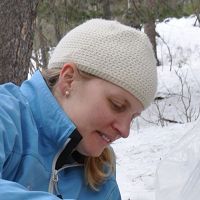Brantley et al., 2011
Twelve testable hypotheses on the geobiology of weathering
Brantley, S.L., Megonigal, J.P., Scatena, F.N., Balogh-Brunstad, Z., Barnes, R.T., Bruns, M.A., Van Cappellen, P., Dontsova, K., Hartnett, H.E., Hartshorn, A.S., Heimsath, A., Herndon, E., Jin, L., Keller, C.K., Leake, J.R., McDowell, W.H., Meinzer, F.C., Mozdzer, T.J., Petsch, S, Pett-Ridge, J., Pregitzer, K.S., Raymond, P.A., Riebe, C.S., Shumaker, K., Sutton-Grier, A., Walter, R., and Yoo, K. (2011)
Geobiology 9(2): 140-165, Cross-CZO National
-
Boulder, INVESTIGATOR
-
National, Eel, Luquillo, Shale Hills, INVESTIGATOR, COLLABORATOR
-
Luquillo, INVESTIGATOR
-
Shale Hills, INVESTIGATOR, COLLABORATOR
-
Luquillo, INVESTIGATOR
-
Sierra, INVESTIGATOR
Abstract
Critical Zone (CZ) research investigates the chemical, physical, and biological processes that modulate the Earth's surface. Here, we advance 12 hypotheses that must be tested to improve our understanding of the CZ: (1) Solar-to-chemical conversion of energy by plants regulates flows of carbon, water, and nutrients through plant-microbe soil networks, thereby controlling the location and extent of biological weathering. (2) Biological stoichiometry drives changes in mineral stoichiometry and distribution through weathering. (3) On landscapes experiencing little erosion, biology drives weathering during initial succession, whereas weathering drives biology over the long term.(4) In eroding landscapes, weathering-front advance at depth is coupled to surface denudation via biotic processes.(5) Biology shapes the topography of the Critical Zone.(6) The impact of climate forcing on denudation rates in natural systems can be predicted from models incorporating biogeochemical reaction rates and geomorphological transport laws.(7) Rising global temperatures will increase carbon losses from the Critical Zone.(8) Rising atmospheric PCO2 will increase rates and extents of mineral weathering in soils.(9) Riverine solute fluxes will respond to changes in climate primarily due to changes in water fluxes and secondarily through changes in biologically mediated weathering.(10) Land use change will impact Critical Zone processes and exports more than climate change. (11) In many severely altered settings, restoration of hydrological processes is possible in decades or less, whereas restoration of biodiversity and biogeochemical processes requires longer timescales.(12) Biogeochemical properties impart thresholds or tipping points beyond which rapid and irreversible losses of ecosystem health, function, and services can occur.
Citation
Brantley, S.L., Megonigal, J.P., Scatena, F.N., Balogh-Brunstad, Z., Barnes, R.T., Bruns, M.A., Van Cappellen, P., Dontsova, K., Hartnett, H.E., Hartshorn, A.S., Heimsath, A., Herndon, E., Jin, L., Keller, C.K., Leake, J.R., McDowell, W.H., Meinzer, F.C., Mozdzer, T.J., Petsch, S, Pett-Ridge, J., Pregitzer, K.S., Raymond, P.A., Riebe, C.S., Shumaker, K., Sutton-Grier, A., Walter, R., and Yoo, K. (2011): Twelve testable hypotheses on the geobiology of weathering. Geobiology 9(2): 140-165,. DOI: 10.1111/j.1472-4669.2010.00264.x
 This Paper/Book acknowledges NSF CZO grant support.
This Paper/Book acknowledges NSF CZO grant support.
Explore Further






